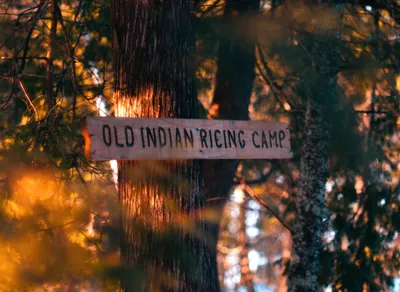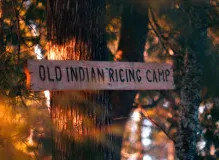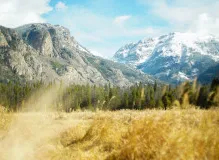For over long years, we have diligently conducted independent research and product testing. When you make a purchase through our links, we may earn a commission.
The Himalayan Base Camp Trek: An Epic Adventure in Nepal
Created: 8 minutes ago

11 min Read
Trekking in the Himalayas is a truly unparalleled experience. The towering peaks, breathtaking landscapes, and rich cultural heritage make it a paradise for adventure enthusiasts and nature lovers. Among the many treks offered in this magnificent region, the Himalayan Base Camp Trek stands out as one of the most popular and rewarding journeys.
In this comprehensive guide, we will explore the Himalayan Base Camp Trek in depth, including the best routes, essential preparations, permits required, and the mesmerizing sights and experiences that await trekkers. So, slip on your hiking boots, grab your backpack, and get ready for an epic adventure high in the mesmerizing Himalayas!
Why Choose the Himalayan Base Camp Trek?
The Himalayan Base Camp Trek offers a unique opportunity to witness the grandeur of the world's highest mountains up close. Whether you are a seasoned trekker or a novice explorer, this trek promises an unforgettable experience. Here are some compelling reasons why you should consider embarking on this adventure:
1. Majestic Himalayan Mountain Ranges
The Himalayas, home to the world's highest peaks, such as Mount Everest and Annapurna, have fascinated mountaineers, explorers, and nature enthusiasts for centuries. The base camp treks allow you to venture deep into these towering giants, offering stunning panoramic views and unparalleled natural beauty.
2. Breathtaking Landscapes and Stunning Views
As you trek through the Himalayan trails, you will be amazed by the diverse landscapes and awe-inspiring vistas that unfold before you. From lush green valleys and ancient forests to immense glaciers and snow-capped peaks, every step offers a postcard-perfect view that will leave you in awe.
3. Cultural Immersion
The Himalayan region is not only known for its natural beauty but also for its vibrant cultural heritage. Trekking in the Himalayas gives you the chance to interact with local communities, visit traditional mountain villages, and experience the rich blend of ancient traditions and warm hospitality.
4. Adventure Sports and Activities
The Himalayas are not just for trekking; they also offer a wide range of adventure sports and activities. From mount everest trekking costain climbing and icefall climbing to paragliding and river rafting, you can add an extra dose of adrenaline to your trekking adventure and make it truly unforgettable.
Best Himalayan Trekking Routes
The Himalayan region offers a plethora of black diamond trekking poles routes, each with its own unique charm and beauty. Here are some of the best Himalayan treks that lead you to breathtaking base camps:
1. Annapurna Base Camp Trek
Duration: 10-14 days
Maximum Elevation: 4,130 meters (13,550 feet)
Nestled in the heart of the Annapurna region, the Annapurna Base Camp Trek is a remarkable journey that takes you to the base camp of the mighty Annapurna massif. This trek offers a perfect blend of natural beauty, cultural encounters, and diverse landscapes. The trail winds through traditional Gurung villages, lush rhododendron forests, and terraced fields, providing stunning views of majestic peaks like Annapurna I, Machapuchare, and Hiunchuli.
2. Everest Base Camp Trek
Duration: 12-16 days
Maximum Elevation: 5,364 meters (17,598 feet)
The Everest Base Camp Trek needs no introduction. It is considered one of the most iconic and challenging treks in the world. The trail takes you through the legendary Khumbu region, offering breathtaking views of Everest, Lhotse, Nuptse, and other towering peaks. Along the way, you will pass through Sherpa villages, ancient monasteries, and the famous Namche Bazaar, immersing yourself in the unique Sherpa culture and traditions.
3. Langtang Valley Trek
Duration: 7-10 days
Maximum Elevation: 4,984 meters (16,355 feet)
The Langtang Valley Trek takes you to the picturesque Langtang region, known for its pristine forests, high alpine meadows, and majestic glaciers. This trek offers a unique blend of natural beauty and cultural encounters, with the opportunity to visit traditional Tamang and Sherpa villages. The trail provides breathtaking views of Langtang Lirung, Ganesh Himal, and other snow-capped peaks.
4. Manaslu Circuit Trek
Duration: 14-20 days
Maximum Elevation: 5,160 meters (16,929 feet)
The Manaslu Circuit Trek is a hidden gem that takes you around the mesmerizing Manaslu massif, the eighth highest mountain in the world. This trek offers a pristine and untouched wilderness experience, as it was opened for trekking only in 1991. The trail takes you through dense forests, beautiful valleys, and high mountain passes, providing stunning views of Manaslu, Ganesh Himal, and other peaks.
5. Upper Mustang Trek
Duration: 12-18 days
Maximum Elevation: 3,810 meters (12,500 feet)
The Upper Mustang Trek is a journey to the mystical and remote Mustang region, which was once an independent kingdom and still retains its centuries-old traditions and culture. The trek offers a glimpse into a world untouched by modernity, with its barren landscapes, ancient caves, and medieval monasteries. The trail takes you to Lo Manthang, the capital of Mustang, offering breathtaking views of the Nilgiri, Dhaulagiri, and Annapurna ranges.
Preparing for the Himalayan Base Camp Trek
Before embarking on the Himalayan Base Camp Trek, it is crucial to make thorough preparations to ensure a safe and enjoyable journey. Here are some essential considerations:
1. Physical Fitness and Training
Trekking in the Himalayas requires a good level of physical fitness and endurance. It is advisable to engage in regular cardiovascular and strength training exercises, such as hiking, running, cycling, and stair climbing, to prepare your body for the demands of high-altitude trekking. Additionally, consult with a healthcare professional to ensure you are medically fit for the trek.
2. Packing Essentials
Packing the right gear and equipment is crucial for a successful trek. Here are some essential items you should include in your backpack:
- Hiking boots: Invest in a good pair of waterproof and sturdy hiking boots that provide ankle support and traction on slippery terrains.
- Layered clothing: Pack a combination of lightweight and warm clothing, including base layers, insulating layers, and a waterproof outer shell.
- Sleeping bag: Choose a sleeping bag suitable for cold temperatures, as nights in the Himalayas can get chilly.
- Backpack: Opt for a comfortable backpack with adequate capacity to carry your essentials and distribute the weight evenly.
- Trekking poles: Consider using trekking poles to provide stability and reduce the strain on your knees during steep descents.
- First aid kit: Carry a well-stocked first aid kit containing essential medications, bandages, and other medical supplies.
- Other essentials: Don't forget to pack a headlamp, sunglasses, sunscreen, water bottles, snacks, toiletries, and a camera to capture the stunning landscapes.
3. Acclimatization and Altitude Sickness
As you ascend to higher altitudes, it is crucial to acclimatize properly to avoid altitude sickness. Take it slow, aim for gradual altitude gain, and include rest days in your itinerary. Stay hydrated, eat a balanced diet, and avoid alcohol and tobacco. Familiarize yourself with the symptoms of altitude sickness, such as headache, dizziness, nausea, and fatigue, and descend immediately if symptoms worsen.
4. Trekking Permits and Travel Insurance
Obtaining the necessary permits is crucial before starting your Himalayan Base Camp Trek. The most common permits required are the TIMS (Trekkers' Information Management System) card and the Annapurna Conservation Area Permit (ACAP) or Sagarmatha National Park Permit (for the Annapurna and Everest region treks, respectively). Additionally, it is highly recommended to have comprehensive travel insurance that covers emergency medical evacuation and trekking-related risks.
5. Cultural Sensitivity and Environmental Protection
Respect the local culture, traditions, and customs while trekking in the Himalayas. Dress modestly, ask for permission before clicking photographs of local people, and learn a few basic words and phrases in the local language. Practice responsible tourism by carrying back all your trash, using reusable water bottles, conserving water, and minimizing your impact on the fragile Himalayan ecosystem.
Mesmerizing Sights and Experiences in the Himalayas
The Himalayan Base Camp Trek offers a range of mesmerizing sights and experiences that will leave you spellbound. Here are some highlights you can expect along the way:
1. Kathmandu: The Gateway to the Himalayas
Your adventure begins in Kathmandu, the vibrant capital city of Nepal. Explore the ancient temples, bustling markets, and UNESCO World Heritage sites in the city. Don't miss a visit to the sacred Pashupatinath Temple, the stupa-lined streets of Boudhanath, and the historic Durbar Square.
2. Lukla: The Thrilling Mountain Flight
From Kathmandu, take a short but thrilling flight to Lukla, the starting point of the Everest Base Camp Trek. The flight offers breathtaking views of the Himalayan peaks and takes you to one of the most challenging and rewarding treks in the region.
3. Gorak Shep Village and Kala Patthar Summit
Gorak Shep is the last village before reaching Everest Base Camp. From here, embark on a challenging hike up to the summit of Kala Patthar, which offers stunning panoramic views of Mount Everest, Nuptse, and the Khumbu Glacier. Capture the awe-inspiring sunrise over the Himalayas and create memories that will last a lifetime.
4. Tea Houses and Local Cuisine
Along the trekking routes, you will come across charming tea houses, which provide accommodation and meals for trekkers. Experience the warm hospitality of the locals, savor traditional Nepali dishes like dal bhat (rice and lentils) and momo (dumplings), and recharge yourself for the journey ahead.
5. Himalayan Flora and Fauna
The Himalayas are home to a rich biodiversity, boasting a variety of flora and fauna. Keep an eye out for rare species like the Himalayan tahr, musk deer, and the elusive snow leopard. Marvel at the vibrant rhododendron forests, alpine meadows adorned with wildflowers, and cascading waterfalls that dot the trails.
6. Mountain Monasteries and Stupas
Immerse yourself in the spiritual ambiance of the Himalayas by visiting ancient monasteries and stupas along the trek. Explore the legendary Tengboche Monastery in the Everest region, where you can witness Buddhist ceremonies and take in the serenity of the surroundings. Discover the centuries-old Buddhist rituals and beliefs that form an integral part of the local culture.
Trekking Safety Tips
While the Himalayan Base Camp Trek offers a breathtaking adventure, it is essential to prioritize safety throughout the journey. Here are some important safety tips to keep in mind:
-
Choose a reputable trekking agency: Select a reliable trekking agency with experienced guides and a good safety record. They will ensure you are equipped with adequate gear, provide emergency support, and guide you through challenging sections of the trail.
-
Stay hydrated: Drink plenty of water to stay hydrated at high altitudes. Dehydration can lead to altitude sickness.
-
Use proper sun protection: Apply sunscreen, wear a hat, and use sunglasses to protect yourself from the strong UV rays at high altitudes.
-
Follow the guidance of your guide: Listen to your trekking guide's instructions and follow their advice regarding the trail conditions, weather updates, and safety precautions.
-
Travel with a trekking partner: Trekking in a group or with a companion enhances safety and reduces the risk of getting lost or encountering difficulties.
-
Be cautious on steep and icy sections: Pay extra attention while ascending or descending steep and icy sections of the trail. Use trekking poles for stability and take smaller steps to maintain balance.
-
Know your limits: Be aware of your physical capabilities and do not push yourself beyond your limits. Take rest when needed and communicate with your guide about any discomfort or illness.
Comparison Chart: Trekking Routes in the Himalayas
To help you choose the best trekking route in the Himalayas based on your preferences and interests, here is a comparison chart:
| Trekking Route | Duration (Days) | Maximum Elevation (meters/feet) | Highlights |
|---|---|---|---|
| Annapurna Base Camp Trek | 10-14 | 4,130/13,550 | Majestic Annapurna range, Gurung culture, Machapuchare (Fishtail) Mountain |
| Everest Base Camp Trek | 12-16 | 5,364/17,598 | Everest, Khumbu Icefall, Namche Bazaar, Sherpa culture |
| Langtang Valley Trek | 7-10 | 4,984/16,355 | Langtang Lirung, Kyanjin Gompa, Tamang culture |
| Manaslu Circuit Trek | 14-20 | 5,160/16,929 | Remote and pristine wilderness, Manaslu massif, Larke Pass, Tibetan culture |
| Upper Mustang Trek | 12-18 | 3,810/12,500 | Hidden kingdom of Mustang, Lo Manthang, Tiji festival, Tibetan Buddhist culture |
This comparison chart provides a snapshot of the key features of each trekking route, helping you make an informed decision based on your preferences and the experiences you seek.
Conclusion
Embarking on the Himalayan Base Camp Trek is an extraordinary adventure that immerses you in the grandeur of the world's highest mountains, diverse landscapes, and vibrant cultures. From the majestic Annapurna massif to the legendary Everest region, each step in the Himalayan trails offers a unique blend of natural beauty, cultural encounters, and thrilling experiences.
As you plan your trek, remember to prepare well, acclimatize properly, and prioritize safety. Respect the local culture and environment, and savor every moment in this breathtaking region. The memories you create during the Himalayan Base Camp Trek will stay with you forever, serving as a testament to the unparalleled beauty and allure of the Himalayas.
So, lace up your boots, embrace the challenge, and let the magic of the Himalayas sweep you off your feet!
Frequently Asked Questions (FAQs)
What is the Himalayan Base Camp Trek?
The Himalayan Base Camp Trek is a popular trekking route in Nepal that takes you to the base camp of various breathtaking peaks, including Mount Everest, Annapurna, and Langtang.
How long does the trek usually take?
The duration of the Himalayan Base Camp Trek depends on the specific route and the trekker's pace. On average, it takes around 8-12 days to reach the base camp and return.
What is the best time to do the Himalayan Base Camp Trek?
The best time for the Himalayan Base Camp Trek is during the spring (March to May) and autumn (September to November) seasons when the weather conditions are favorable, and the views are stunning.
What are the physical fitness requirements for the trek?
The Himalayan Base Camp Trek requires a moderate level of physical fitness. It is recommended to engage in regular cardio and strength exercises to prepare for the trek.
Is previous trekking experience necessary?
Previous trekking experience is not mandatory for the Himalayan Base Camp Trek. However, it is beneficial to have some prior experience with multi-day hikes and high-altitude conditions.
What kind of accommodation can be expected during the trek?
Accommodation during the Himalayan Base Camp Trek is typically in teahouses or lodges along the trekking routes. These provide basic facilities such as beds, blankets, and meals.
Do I need any permits for the trek?
Yes, permits are required for the Himalayan Base Camp Trek. The specific permits include the TIMS (Trekkers' Information Management System) card and the Sagarmatha National Park permit.
What safety measures should I follow during the trek?
Some important safety measures for the Himalayan Base Camp Trek include acclimatizing properly, staying hydrated, following the guidance of experienced guides, and carrying essential trekking gear.
Are there any age restrictions for the trek?
There are no strict age restrictions for the Himalayan Base Camp Trek. However, it is essential to consult with a doctor and assess your physical fitness before undertaking the trek, especially for older participants.
Can I hire a guide or porter for the trek?
Yes, hiring a guide or porter is highly recommended for the Himalayan Base Camp Trek. They can assist with navigation, carrying heavy loads, and provide valuable insights about the local culture and environment.
What are the highlights of the Himalayan Base Camp Trek?
The highlights of the Himalayan Base Camp Trek include breathtaking mountain views, unique cultural experiences in local villages, crossing suspension bridges, exploring monasteries, and the sense of achievement upon reaching the base camp.
Are there any alternative treks to consider?
Yes, there are several alternative treks in Nepal that offer stunning landscapes and cultural experiences. Popular alternatives include the Annapurna Circuit Trek, Langtang Valley Trek, and Upper Mustang Trek.


